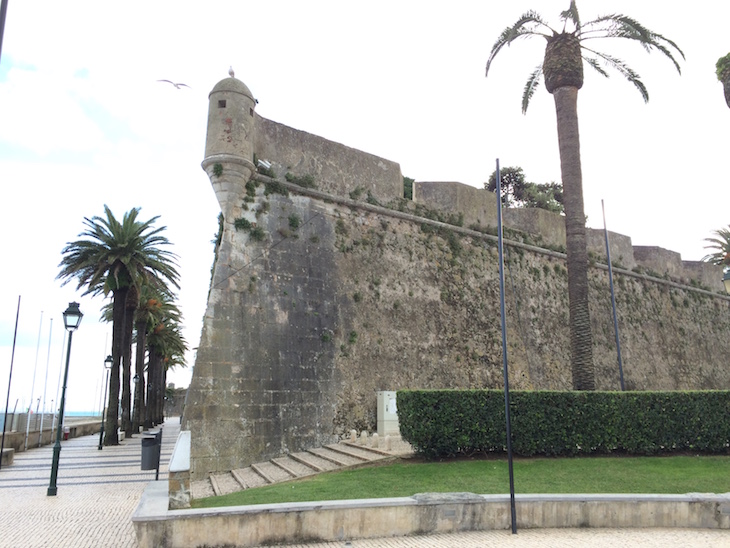Cascais is a traditional and charming Portuguese fishing town, which is situated on the beautiful Lisbon coastline. Historically, Cascais was the summer retreat of the Portuguese nobility, and today the town is an elegant fusion of decorative 19th-century architecture and
modern tourist facilities.

We have become friends with a wonderful sister from the temple, Filipa Tirgoala, who grew up in Cascais and she offered to take us there on Monday.
Of course it would have been much nicer if Mother Nature had cooperated.
We will visit on a sunnier day, but for now...this is what ya get!
Famous for its beaches - this is what we didn't see!
HOWEVER...We did see...
Castles and Forts
Castles and Forts

Boca do Inferno
This rocky cliff is just outside of Cascais. Literally translated, its name means 'the mouth of hell', and locals are convinced that in this cave steeped into the cliffs, you can hear the sound of the true underworld.
Cabo da Roca
Cabo da Roca is the most western point in Portugal and all of Europe, most often referred to as “the edge of the world”. It is a rugged coastline adorned with rocky cliffs overlooking the roaring Atlantic Ocean; and one of the best views in Portugal. It is marked by a 1772 lighthouse and a monument indicating that you have been there and done that.
Convento dos Capuchos
Leaving the sunny coast, we headed into the heart of the Sintra forest (which is always misty, damp, and gray).
Hidden in the woods is this little hobbit-hole-like convent, which was originally built in 1560 to house friars, who lived in incredibly cramped conditions, in tiny cells with low, narrow doors.
It is often nicknamed the Cork Convent because its minuscule cells are lined with cork. Visiting here is kind of like an Alice in Wonderland experience, as you try to squeeze your way through the cells, chapels, kitchen, and cavern.
The monks lived here until 1834.

Hidden in the woods is this little hobbit-hole-like convent, which was originally built in 1560 to house friars, who lived in incredibly cramped conditions, in tiny cells with low, narrow doors.
It is often nicknamed the Cork Convent because its minuscule cells are lined with cork. Visiting here is kind of like an Alice in Wonderland experience, as you try to squeeze your way through the cells, chapels, kitchen, and cavern.
The monks lived here until 1834.














Your first visitors!!!! 🙌 How exciting!
ReplyDelete